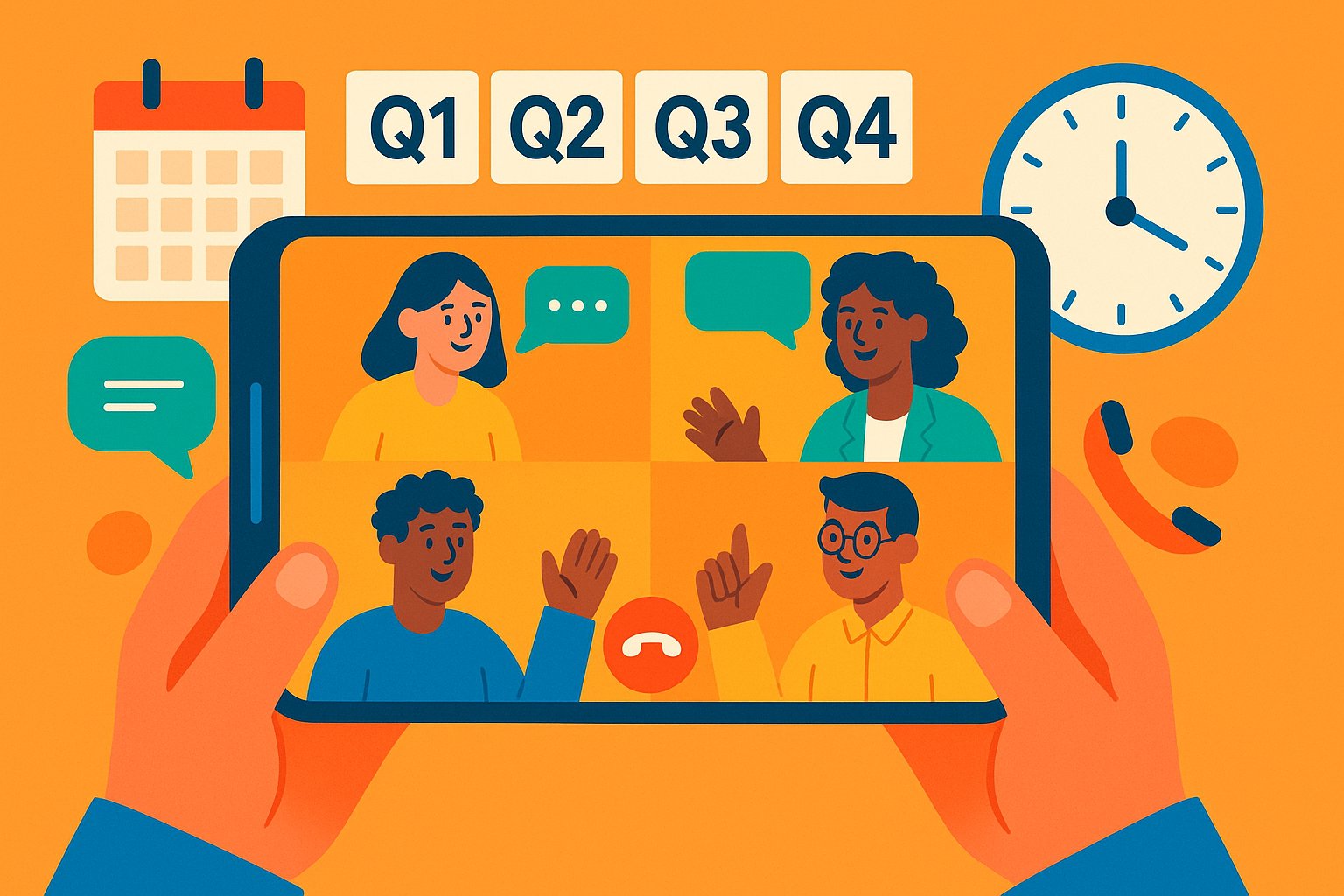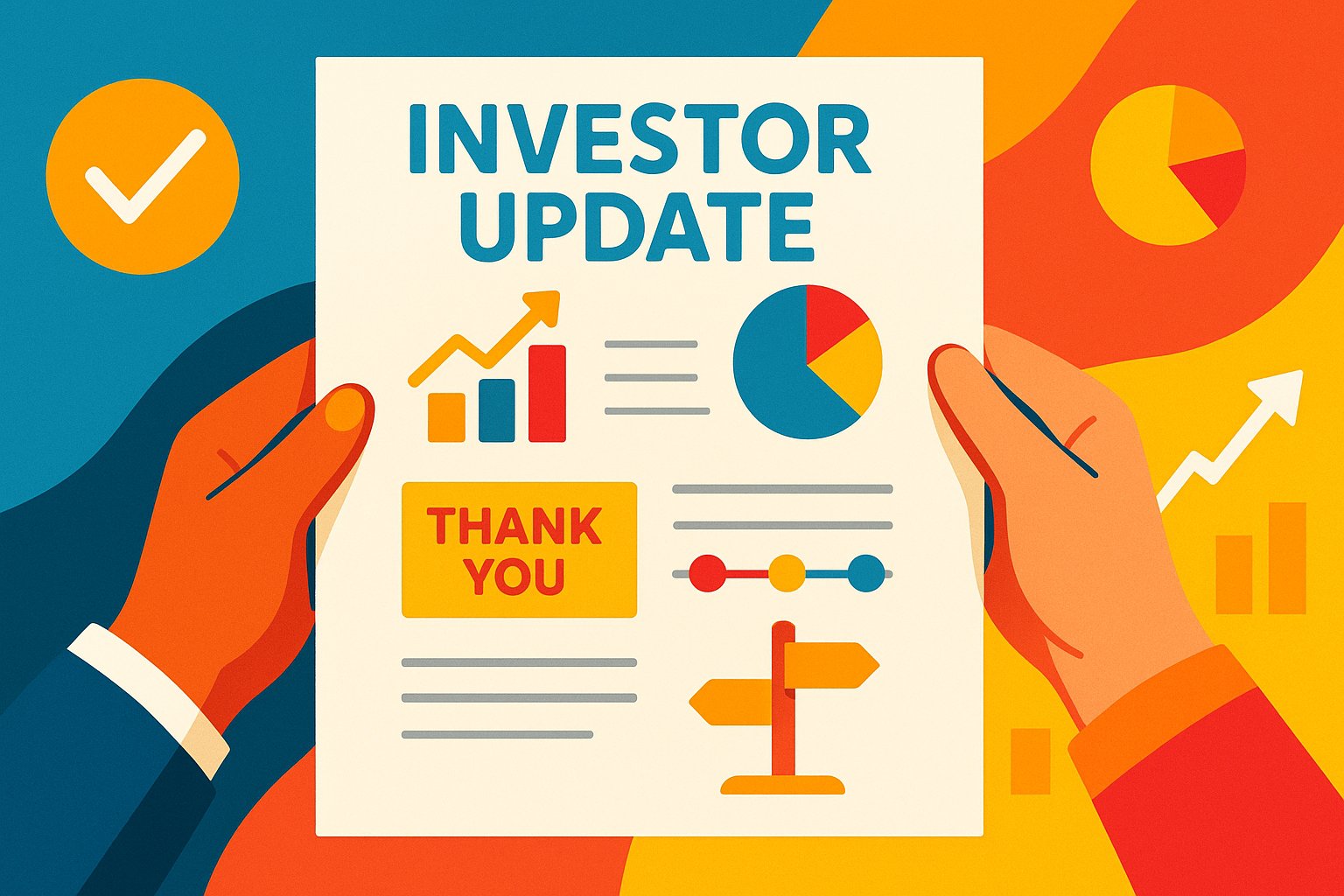Setting the Stage: The Case for Live Engagement
In the dynamic world of equity crowdfunding, maintaining a robust connection with your investor community can mean the difference between a one-off funding event and a sustainable, long-term growth partnership. Quarterly calls—live, scheduled conference sessions where founders share updates, answer questions, and gather feedback—offer a compelling avenue for deepening that connection. These real-time interactions can elevate transparency, foster trust, and create a sense of co-ownership among backers who crave more than periodic emails. Yet, committing to a regular cadence of calls also demands resources, planning, and a clear strategic rationale. Should you introduce quarterly calls into your investor-relations playbook? In this extended opening section, we’ll weigh the promise of live dialogue against the practical considerations, preview the benefits and potential pitfalls, and set the stage for a detailed exploration of when, why, and how to host calls that energize rather than overwhelm your equity crowdfunding supporters.
The Power of the Spoken Word: Why Live Calls Resonate
While written updates and recorded videos have their place, nothing quite matches the immediacy and authenticity of a live conversation. Quarterly calls give investors the chance to hear your voice, observe your body language, and gauge your passion in real time—subtleties that static communications often miss. For early-stage ventures, this level of engagement can be transformative: backers feel valued as active participants, not just passive recipients of news. Moreover, live Q&A segments allow founders to address concerns on the spot, clarifying misunderstandings before they escalate. This dynamic back-and-forth fosters a communal atmosphere where investors share insights, peer-to-peer discussions spark new ideas, and collective problem-solving emerges organically. In a market crowded with automated emails and prerecorded briefs, quarterly calls can differentiate your campaign by humanizing the founder-backer relationship.
Balancing Frequency and Impact: Why Quarterly?
Annual or biannual calls may feel too sparse to sustain momentum, while monthly calls risk becoming repetitive or burdensome. Quarterly intervals strike a strategic sweet spot, aligning with typical business cycles—fiscal quarters, product sprints, and sales seasons—without overtaxing your team or drowning investors in minutiae. A quarterly rhythm allows you to report substantive progress: prototype completions, milestone customer sign-ups, marketing campaign results, or regulatory approvals. It also affords time to gather meaningful data and craft thoughtful narratives around both triumphs and challenges. By anchoring calls to a three-month cadence, you create a predictable forum that investors can plan around, ensuring robust attendance and engagement without overcommitting operational resources.
Crafting an Agenda with Purpose: Structuring Calls for Maximum Value
To ensure that your quarterly calls resonate, each session should follow a clear agenda that balances information delivery, interactive dialogue, and forward-looking strategy. Begin by revisiting the key objectives set in the previous call: Did you reach your user acquisition target? Have you resolved supply chain issues? Honest accountability builds credibility. Next, present fresh data—revenue growth, burn rate, product development milestones—framing each metric within broader business goals. Allocate time for deep dives into strategic initiatives, such as new market expansions or partnerships, to signal that you’re thinking ahead. Finally, open the floor for investor questions and feedback. Use an online Q&A tool to collect and prioritize queries, ensuring that the most pressing topics receive attention. By meticulously planning each segment, you deliver a focused, high-value experience that keeps investors invested in both your success and your process.
Building the Technical Backbone: Choosing the Right Platform
Behind every seamless quarterly call lies a reliable technical infrastructure. Selecting the right webinar or conference platform depends on your audience size, desired features, and budget. For smaller investor rounds—under 100 participants—video conferencing tools like Zoom or Google Meet may suffice, offering breakout rooms and real-time polls. If you anticipate larger crowds or want branded registration pages, consider specialized webinar platforms such as Demio or GoToWebinar, which provide automated reminders, data analytics, and interactive chat functions. Test your chosen platform thoroughly before the call—verify audio and video quality, rehearse screen sharing, and ensure that recording features work smoothly. Technical glitches can undermine even the most compelling content, so preparation is paramount. When the platform performs flawlessly, investors focus on your message rather than wrestling with lagging video or missing audio.
Elevating Accessibility: Accommodating Global Backers
Crowdfunding communities often span multiple time zones and professional schedules. While live attendance boosts immediacy, you can’t assume all investors will join at the scheduled hour. To maximize reach, record each call and distribute the playback link promptly—ideally within 24 hours—paired with a brief transcript of highlights. Offer multiple live time slots for significantly global audiences or host follow-up “office hours” for investors in distant regions. Additionally, provide closed captions or summaries to accommodate participants with different accessibility needs or those who process information better in written form. By ensuring that no backer is left behind, you reinforce the inclusive spirit of crowdfunding and respect the diverse circumstances of your investor base.
Personalizing the Experience: Engaging Small and Large Investors Alike
Within your equity crowdfunding audience, investment sizes can vary dramatically—from micro-investors who contributed a few hundred dollars to high-value backers who committed five or six figures. Delivering one uniform call risks alienating both ends of this spectrum: small backers may feel overshadowed, while large investors crave granular financial analysis. To strike balance, integrate breakout sessions or follow-up email tracks tailored to different segments. For example, after the main call, offer a short “Founders Circle” debrief for top-tier investors, focusing on detailed financial models and board-level strategic discussions. Simultaneously, send a concise “Community Digest” email to micro-investors, summarizing key takeaways in digestible language. Personalization demonstrates that you value every contributor, fostering loyalty and preventing the one-size-fits-all pitfall.
Aligning Calls with Other Communications: Crafting a Cohesive Narrative
Quarterly calls should complement—not replace—your broader investor-relations ecosystem. Coordinate call themes with written updates, blog posts, and social-media teasers to create a cohesive narrative arc. For instance, a written mid-quarter newsletter might highlight early signals of traction—customer testimonials or pilot metrics—priming investors for a deeper exploration during the upcoming video conference. After the call, reinforce key messages via follow-up emails, sharing slide decks or supplementary materials. This multimedia approach caters to diverse learning styles and keeps momentum alive across channels. When every touchpoint resonates with unified messaging, you amplify clarity and avoid mixed signals that can confuse or disengage your audience.
Measuring Success: Evaluating Engagement and Impact
To optimize your quarterly calls, track quantitative and qualitative metrics that surface both attendance patterns and investor sentiment. Monitor registration rates versus live attendance and playback views, noting any dips that may signal scheduling conflicts or topic misalignment. During the call, use live polling or chat analytics to gauge which segments resonated most. After the session, solicit feedback through brief surveys—asking investors to rate the call’s relevance, pacing, and content depth. Look for themes in open-text responses: Are backers hungry for deeper financial projections? Do they crave more customer success stories? By systematically analyzing these insights, you refine future call agendas, adjust cadence if needed, and demonstrate responsiveness to investor preferences.
Mitigating Common Pitfalls: Avoiding Update Fatigue and Overcommitment
While quarterly calls offer powerful engagement benefits, overcommitting can backfire. If your team struggles to gather compelling content each quarter, calls may become sparse or repetitive, leading to investor fatigue. To prevent this pitfall, maintain a content calendar that maps out major milestones—product launches, regulatory approvals, marketing campaigns—ensuring you have fresh material for each session. Delegate responsibilities across your leadership team: one quarter’s session could spotlight the CTO on technical progress, the next could feature your Head of Sales dissecting go-to-market metrics. Additionally, remain mindful of investor bandwidth; if attendance erodes consistently, consider shifting to a semi-annual model supplemented by ad-hoc “spotlight updates” when key events occur. Thoughtful pacing preserves the novelty and impact of each call.
Cultivating a Culture of Dialogue: Empowering Two-Way Feedback
The true value of quarterly calls lies in the dialogue they spark. Beyond answering pre-submitted questions, invite investors to share strategic ideas, introduce potential partners, or suggest product improvements. Allocate time for small group discussions in virtual breakout rooms, fostering peer-to-peer connections that can generate new collaborations or market insights. Capture these ideas diligently, follow up on promising suggestions, and credit contributors publicly in subsequent calls. This feedback loop transforms passive watchers into active collaborators, infusing your venture with fresh perspectives and deepening backer loyalty. When investors see their input shaping your roadmap, the calls evolve from monologues into symphonies of co-creation.
Transitioning as You Scale: Adapting the Model for Later Rounds
As your company matures and attracts institutional investors or prepares for formal board governance, the quarterly call format may need adaptation. Later-stage backers often expect more formal investor-relations protocols—earnings-call style presentations, audit-ready financial disclosures, and regulated reporting channels. You can retain the spirit of quarterly calls by hosting hybrid investor days, combining public webinars for your crowdfunding community with private analyst sessions for larger stakeholders. Gradually integrate your calls into broader IR workflows, ensuring compliance with securities regulations while preserving the culture of transparent dialogue that set you apart in your early rounds. Evolving your model demonstrates both adaptability and an unwavering commitment to investor engagement.
Elevating Engagement Through Purposeful Rhythm
Hosting quarterly calls with equity crowdfunding investors can be a transformative strategy—fostering transparency, strengthening trust, and galvanizing your community around shared milestones. By finding the ideal cadence, crafting purposeful agendas, employing the right technical platforms, and personalizing experiences across investor segments, you deliver authentic, value-driven interactions that keep backers invested in both your progress and your vision. Yet, as your venture evolves, so too must your approach—balancing live engagement with written updates, scaling content complexity, and aligning with emerging investor-relations norms.
In the end, the question isn’t simply “Should you host quarterly calls?” but rather “How can you cultivate a sustainable rhythm of meaningful dialogue that resonates at every stage of growth?” By embracing a strategic, data-informed, and investor-centric mindset, you’ll transform quarterly calls from calendar obligations into catalysts for advocacy, collaboration, and enduring crowdfunding success.




